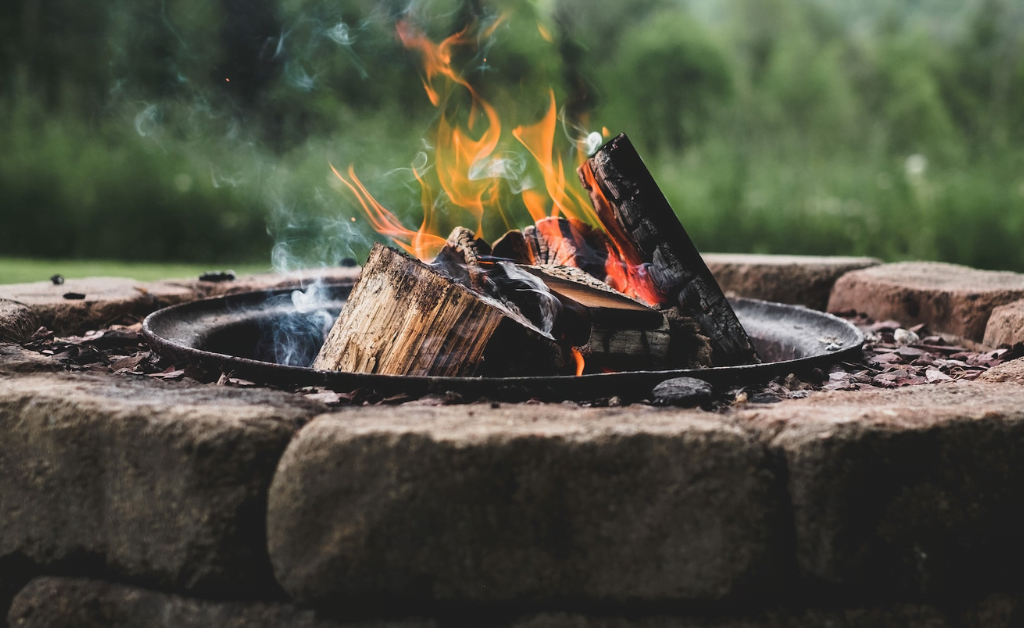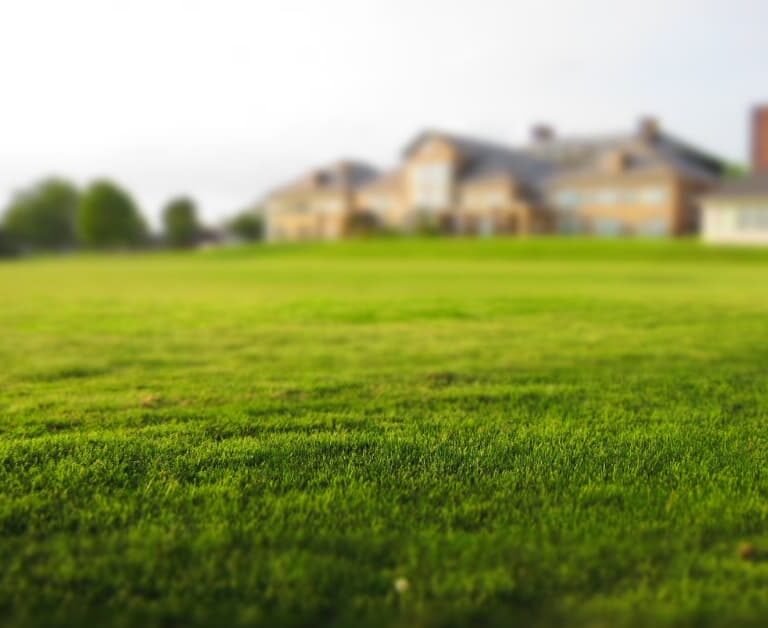
Imagine spending a cozy evening gathered around a warm, crackling fire pit in your own backyard, creating unforgettable memories with family and friends. But before you can indulge in this dreamy vision, it’s crucial to know the ins and outs of having a fire pit on your property.
In this blog post, we walk you through local regulations, safety concerns, types of fire pits available, and expert tips to help you navigate backyard recreational fires with ease.
Regulations And Safety Concerns For Fire Pits In Your Backyard
Check your local laws and regulations before adding a fire pit to your backyard, ensuring that you adhere to any height and distance requirements, safety precautions, and HOA guidelines.
Understanding Local Regulations
It’s crucial to familiarize yourself with local regulations before setting up a fire pit in your backyard, as rules and requirements can vastly differ depending on your location.
To begin, check with your city or county government website for guidelines related to outdoor fires and recreational burns, or reach out directly to the zoning office or fire department for clarification.
For example, some areas require commercial fire pits complete with screen tops or chimneys (as mentioned in the important facts above), while others allow personally built alternatives within set size parameters.
Keep in mind that homeowner associations (HOAs) typically have their own rules and regulations regarding backyard fire pits – so be sure also you’re complying with any community-specific policies that apply.
Safety Precautions To Avoid Fire Hazards
As a homeowner, it’s crucial to follow these safety precautions to avoid fire hazards when enjoying your backyard fire pit:
- Ensure your fire pit is at least 25 feet away from any combustible materials, including buildings, sheds, fences, and decks.
- Avoid leaving your outdoor fire unattended, as this is both illegal and a significant fire hazard.
- Use only dry, seasoned wood that has been split for at least six months to reduce excessive smoke and minimize the risk of flying embers.
- Refrain from burning green wood, construction waste, plastic, garbage, or yard waste since they produce more smoke and can be toxic.
- Check with local ordinances and fire department regulations regarding recreational fires in your area.
- Place a fire screen or cover over the open flame to prevent embers from escaping and starting unintended fires.
- Keep a bucket of water or garden hose nearby as a readily available water source in case of emergencies.
- Make sure children and pets maintain a safe distance from the outdoor fire pit.
- Regularly clean out ashes and debris from the bottom of the fire pit to prevent buildup that might create dangerous conditions.
- Always supervise the recreational fire until it is completely extinguished before leaving the area.
By adhering to these safety precautions, you will ensure a fun yet secure backyard experience for everyone involved while also respecting local laws and regulations surrounding outdoor fires.
Height And Distance Requirements
Abiding by height and distance requirements is essential for safe and responsible backyard fire pit usage. One crucial aspect homeowners need to be aware of is placing the fire pit at a minimum distance of 25 feet from combustible materials, such as buildings, sheds, vehicles, or decks.
Another key factor to consider is ensuring that natural gas fire pits have at least 10 feet of clearance from any surrounding objects. For portable fire pits or barbecues, keep them a minimum of 15 feet away from any flammable structures or surfaces.
HOA Rules And Guidelines
As a homeowner, it’s important to understand your HOA’s rules and guidelines when it comes to having a fire pit in your backyard. Most HOAs regulate fire pits in the same manner as other open-flame devices or may have specific rules regarding their use.
For example, some HOAs do not permit wood-burning fire pits due to safety concerns, while others allow gas or gel-based options.
It’s essential to review your HOA’s regulations thoroughly before adding a fire pit to your yard. Always ensure that you follow all guidelines for placement, size, and fuel sources carefully.
Ultimately, these rules are there to help keep the community safe and maintain its overall appearance.
Types Of Fire Pits For Your Backyard
Explore the different types of fire pits you can install in your backyard, including wood-burning, gas, and propane options.
Wood-burning Fire Pits
I absolutely love using my wood-burning fire pit in the backyard. There’s something about the natural crackling sound and bright orange-yellow flames that create a cozy atmosphere during an outdoor gathering.
However, it’s important to use seasoned, dry wood to avoid particle pollution and reduce the risks of uncontrolled fires. Maintenance is also key when using a wood-burning fire pit as they require more attention compared to propane fires.
Did you know that burning wet or green wood can produce more smoke and release toxins into the air? That’s why it’s crucial to only burn seasoned, dry wood in your fire pit.
Additionally, always keep flammable materials away from the surrounding area and never leave your fire unattended.
Gas Fire Pits
Gas fire pits are a great option for homeowners looking for an easy and consistent source of outdoor heat. They come in both natural gas and propane options, with the former being a permanent fixture in your backyard.
Natural gas is piped directly to the pit, eliminating the need for refueling like with propane fire pits.
However, it’s important to keep in mind that installing a natural gas fire pit can be expensive due to installation costs. Propane fire pits are generally portable and easier to move around but require regular fueling.
Propane Fire Pits
I absolutely love my propane fire pit! It’s so hassle-free and easy to use, making it a great option for homeowners who want the warmth and ambiance of a fire without the effort of gathering wood.
Propane gas fire pits come in all sorts of styles, from sleek modern designs to more rustic options with stone or metal accents.
Another advantage of propane gas fire pits is that they can be used year-round, without worrying about burn bans or wet weather conditions like you might with wood fires.
While they do cost more than wood or charcoal options, they’re still cheaper than hiring an electrician to install a permanent natural gas line.
Tips For Using A Fire Pit Safely
Always ensure that your fire pit is placed at a safe distance from any structures or combustible materials, and never leave it unattended.
Proper Placement And Clearance
One of the most important aspects of owning a fire pit is ensuring it is placed in the right location and has adequate clearance. Here are some tips for proper placement and clearance:
- Choose a level surface: Your fire pit should be placed on a stable, level surface to prevent it from tipping over. This can be a concrete slab or paver patio or even just a patch of bare ground.
- Keep away from structures: Permanent and portable fire pits should be placed at least 10 feet away from any structures, including your house, garage, shed, or fence. This helps prevent any accidental fires that could cause damage.
- Avoid overhanging trees: Your fire pit should not be located under any overhanging tree branches. The ideal clearance between tree branches and the fire pit zone is 20 feet, with a minimum of 12 feet.
- Consider wind direction: If possible, place your fire pit in an area where prevailing winds won’t blow smoke into your house or your neighbor’s yard.
- Check local codes: Depending on where you live, there may be specific regulations about how close your fire pit can be to property lines or structures. Make sure to check with your local government or fire department before installing a new fire pit.
By following these guidelines for proper placement and clearance of your fire pit, you’ll not only ensure that you’re keeping yourself and your property safe but also enjoying all the outdoor ambiance that comes with having a backyard bonfire.
Use Of Fire Screens And Covers
Using fire screens and covers for your fire pit is crucial for safety purposes. Here are some important points to keep in mind:
- A fire screen or mesh cover placed over the top of your fire pit can prevent embers and sparks from flying out and potentially causing a fire outside of the designated area.
- Fire pit covers help keep debris, rain, and snow out of the pit when not in use, which reduces the risk of accidental fires caused by combustible materials left inside.
- It’s essential to choose a screen or cover that fits your fire pit properly to ensure that it will effectively contain any potential hazards.
- Always make sure any screen or cover you use is made of non-flammable material that can withstand high temperatures and is free from holes or other signs of damage.
- When considering purchasing a new cover for your fire pit, you might want to select one with an added layer of insulation to reduce its surface temperature.
- Finally, if you have children or pets, be sure to supervise them closely around any open flame. Additionally, you should teach them about the dangers associated with fires so they understand what precautions they should take.
Remember that using a fire screen or cover for your backyard fire pit is just one part of ensuring your safety when enjoying outdoor fires. Be sure to follow all local laws and regulations regarding recreational fires while also taking common-sense safety measures like keeping flammable materials away from the flames.
Safe Fuel Choices
When it comes to fuel choices for your backyard fire pit, it is important to consider safety. Wood, propane, and natural gas are the most common options. Burning only seasoned, dry wood that burns hotter and cleaner can help reduce smoke and harmful particulates in the air.
It is also crucial to avoid burning trash, plastic, or paper in a fire pit as these materials release toxic fumes when burned. If you opt for a gas-powered fire pit, it can often be safer and easier to use than a wood-burning one since there’s no need to worry about handling combustible materials or flare-ups from hot embers.
Remember that whatever type of fuel you decide on using for your fire pit- ensure that it complies with local regulations related to outdoor fire pits and recreational fires in general.
Fire Extinguisher And Water Sources
It is critical to have a fire extinguisher or another water source close by when you are using your backyard fire pit. You never know when something unexpected might happen, and having a way to put out the flames quickly can prevent things from getting out of control.
Another essential tip is not to add more fuel once it’s time to extinguish the fire. Instead, let the remaining embers burn down before using water to douse them completely.
Design And Installation Options For Your Backyard Fire Pit
There are various design and installation options available for your backyard fire pit, including in-ground fire pits, portable fire pits, DIY kits, and gas fire pit options.
In-ground Fire Pits
If you’re looking for a more permanent fire pit option, in-ground fire pits can be a great choice. These fire pits are built directly into the ground and offer a unique, rustic look that blends well with natural landscapes.
However, it’s important to note that there isn’t specific information about in-ground fire pits regarding backyard fire pit design and installation options or regulations.
When designing your in-ground fire pit, consider the style, shape, and materials of your yard for a cohesive look. It’s also essential to ensure proper ventilation for safety purposes.
When using your in-ground fire pit, remember basic safety tips such as keeping flammable objects away from the flames and always having water nearby for emergencies.
Portable Fire Pits
One of the most popular options when it comes to backyard fire pits is portable ones. These are great for those who may not have a lot of space or want something they can easily move around.
Portable fire pits come in many different designs, from fire bowls to tables made of copper, steel, or even cast iron.
Propane fire pits are also an excellent option for homeowners looking for a clean-burning experience with no smoke. This can be particularly useful if you don’t want to smell like a campfire after spending time by your portable pit.
DIY Fire Pit Kits
If you’re looking to add a fire pit to your backyard, DIY kits are a great option. Here are some reasons why:
- Easy Installation – DIY kits come with all the materials and instructions needed for installation, making it easy for homeowners to do it themselves.
- Cost-Effective – DIY kits are often less expensive than hiring a contractor to build a custom fire pit.
- Variety of Options – There are many different types of DIY fire pit kits to choose from, including stone, brick, and metal options.
- Personalized Design – DIY kits allow homeowners to personalize their fire pit design to fit their specific backyard aesthetic.
- Increased Property Value – Installing a fire pit can increase the property value of your home and make it more attractive to potential buyers.
- Longevity – Many DIY fire pit kits come with warranties that guarantee the longevity and durability of the product.
- Safety Features – Some DIY fire pit kits come with safety features such as spark screens and covers, making them safer for use in residential areas.
- Fun and Functionality – A backyard fire pit is a fun addition to any outdoor space and provides warmth during cooler evenings in the fall and winter months.
So if you’re considering adding a fire pit to your backyard, consider a DIY kit as an affordable and customizable option.
Gas Fire Pit Options
Gas fire pits provide a convenient and clean-burning option for homeowners who want to enjoy the warmth and ambiance of a fire without all the hassle of wood burning.
With gas, you don’t have to worry about chopping wood or dealing with messy ash cleanup. Gas fire pits come in two types – propane or natural gas. Propane fire pits use an external tank that can be easily refilled or replaced as needed, which makes them portable and ideal for outdoor settings like patios, decks, and campsites.
Natural gas is a permanent fuel source that requires professional installation by a qualified technician, making it more suitable for permanent installations like backyards or gardens.
Conclusion And Final Thoughts On Backyard Fire Pit Ownership
Having a fire pit in your backyard can add warmth and ambiance to your outdoor space. However, it’s important to abide by local laws and regulations when it comes to safety concerns.
Make sure you research the rules regarding backyard fires in your area, choose safe fuel options, place your fire pit far enough from structures and combustible materials, and always have water nearby.




